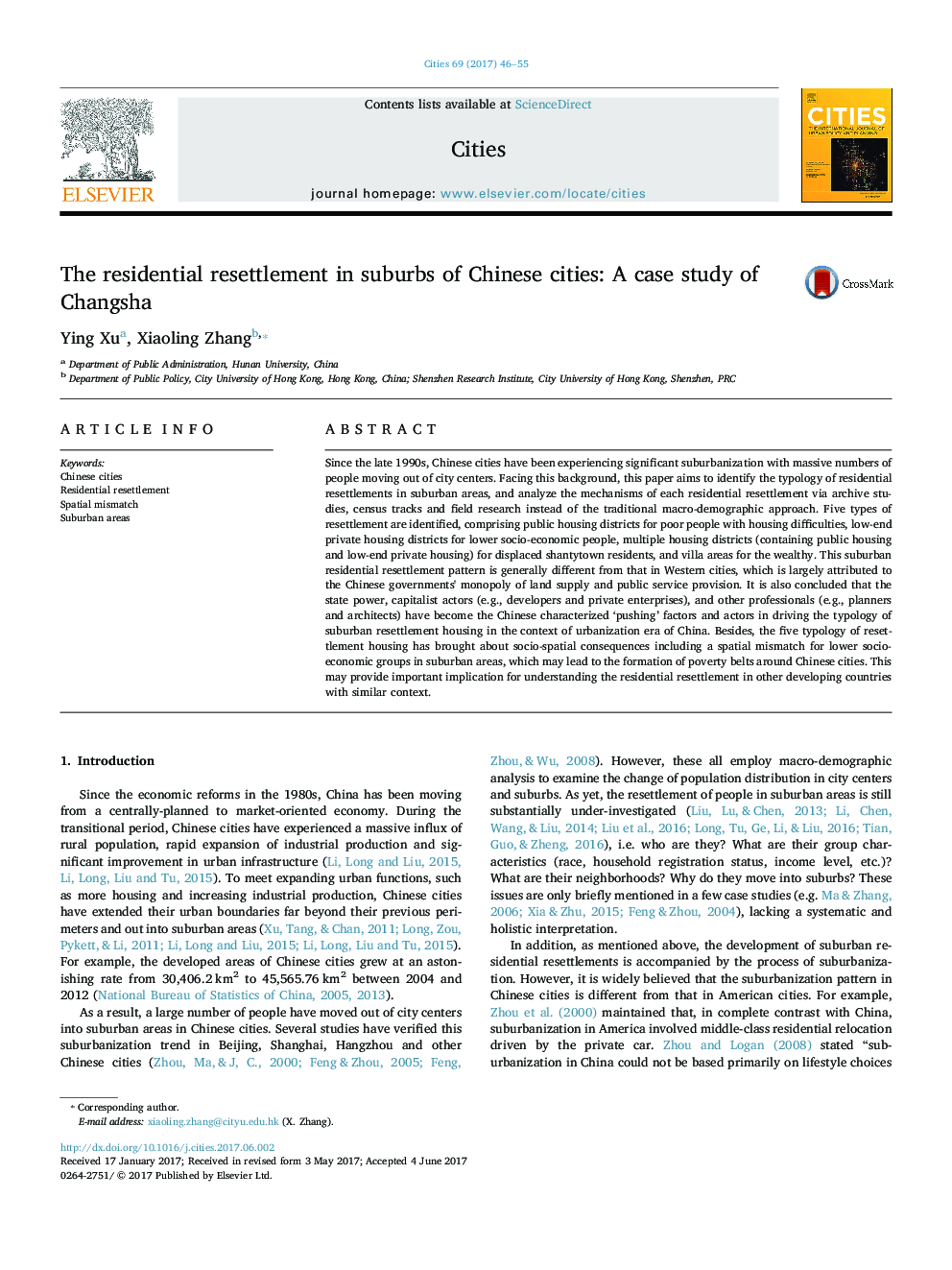| Article ID | Journal | Published Year | Pages | File Type |
|---|---|---|---|---|
| 5108024 | Cities | 2017 | 10 Pages |
Abstract
Since the late 1990s, Chinese cities have been experiencing significant suburbanization with massive numbers of people moving out of city centers. Facing this background, this paper aims to identify the typology of residential resettlements in suburban areas, and analyze the mechanisms of each residential resettlement via archive studies, census tracks and field research instead of the traditional macro-demographic approach. Five types of resettlement are identified, comprising public housing districts for poor people with housing difficulties, low-end private housing districts for lower socio-economic people, multiple housing districts (containing public housing and low-end private housing) for displaced shantytown residents, and villa areas for the wealthy. This suburban residential resettlement pattern is generally different from that in Western cities, which is largely attributed to the Chinese governments' monopoly of land supply and public service provision. It is also concluded that the state power, capitalist actors (e.g., developers and private enterprises), and other professionals (e.g., planners and architects) have become the Chinese characterized 'pushing' factors and actors in driving the typology of suburban resettlement housing in the context of urbanization era of China. Besides, the five typology of resettlement housing has brought about socio-spatial consequences including a spatial mismatch for lower socio-economic groups in suburban areas, which may lead to the formation of poverty belts around Chinese cities. This may provide important implication for understanding the residential resettlement in other developing countries with similar context.
Keywords
Related Topics
Social Sciences and Humanities
Business, Management and Accounting
Tourism, Leisure and Hospitality Management
Authors
Ying Xu, Xiaoling Zhang,
